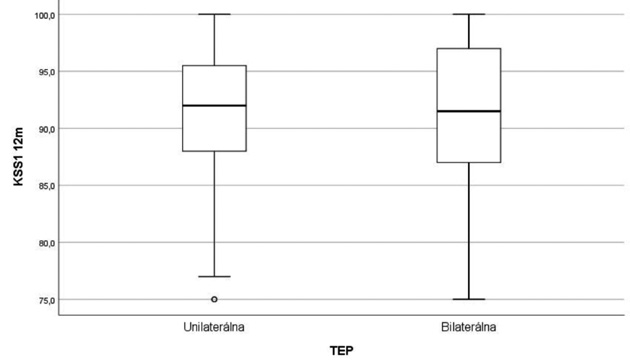Abstract
Introduction: Total knee replacement is one of the most common surgical methods in diagnosis of end staged osteoarthritis. In this retrospective analysis, we focus on comparison of functional and clinical outcome in patients undergoing unilateral and bilateral replacement within a single surgical procedure.
Methods: 54 patients (bilateral 19, unilateral 35) underwent total knee replacement in our clinic participated in the current study. The length of hospital stay was monitored in all patients. Assessment of functional results was based on the WOMAC score, KSS 1, KSS2, range of motion and presence of complications in both groups.
Results: Both groups of patients were homogeneous with age, body mass index and sex. The length of hospital stay in the unilateral group was 4.7±1.3 and 5.6±2.0 in the bilateral group. Patients operated on unilaterally achieved flexion of 114.9±9.3 after one year, bilateral group 112.6±8.6, the difference was insignificant. In both groups, there is a significant improvement one year postoperatively at WOMAC, KSS1 and KSS2. Comparing WOMAC, KSS1 and KSS2 between the unilateral and bilateral groups 3, 6, 12 months postoperatively, the differences are insignificant. The revision of implants in two-year follow-up reached 1.5% in unilateral group and 1.4% in bilateral group.
Conclusion: Unilateral and bilateral knee joint endoprosthesis implantation is a successful surgical method in orthopedic practice. With conscious selection of patients, bilateral implantation may be more advantageous alternative, as the patient undergoes one operation and the associated risks

